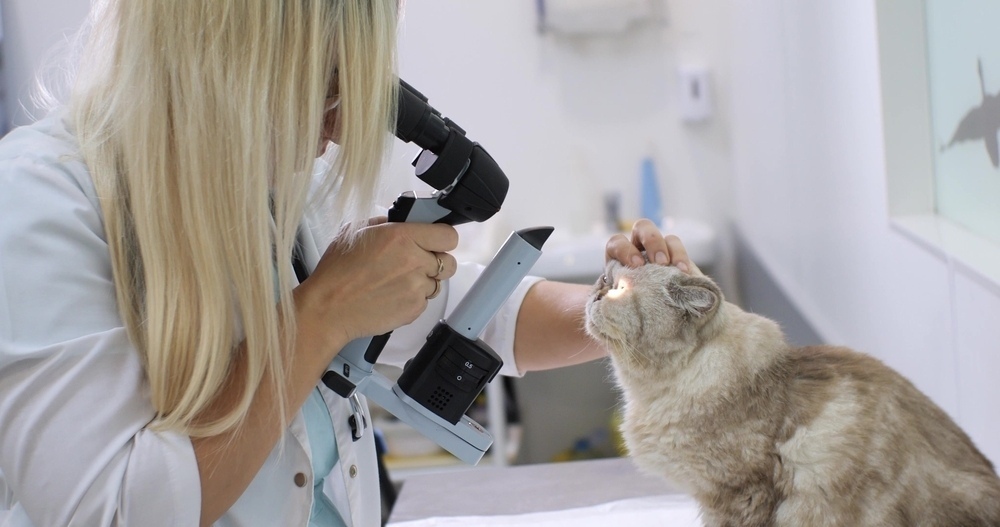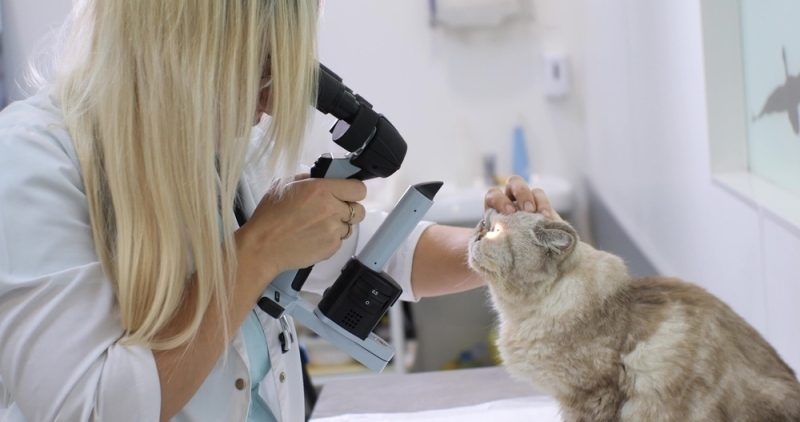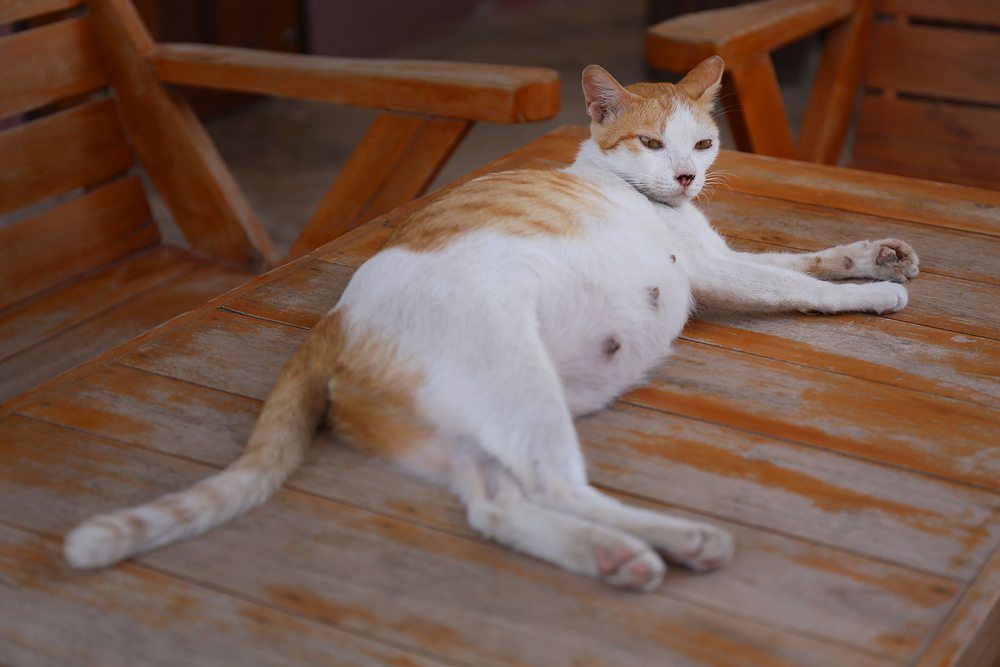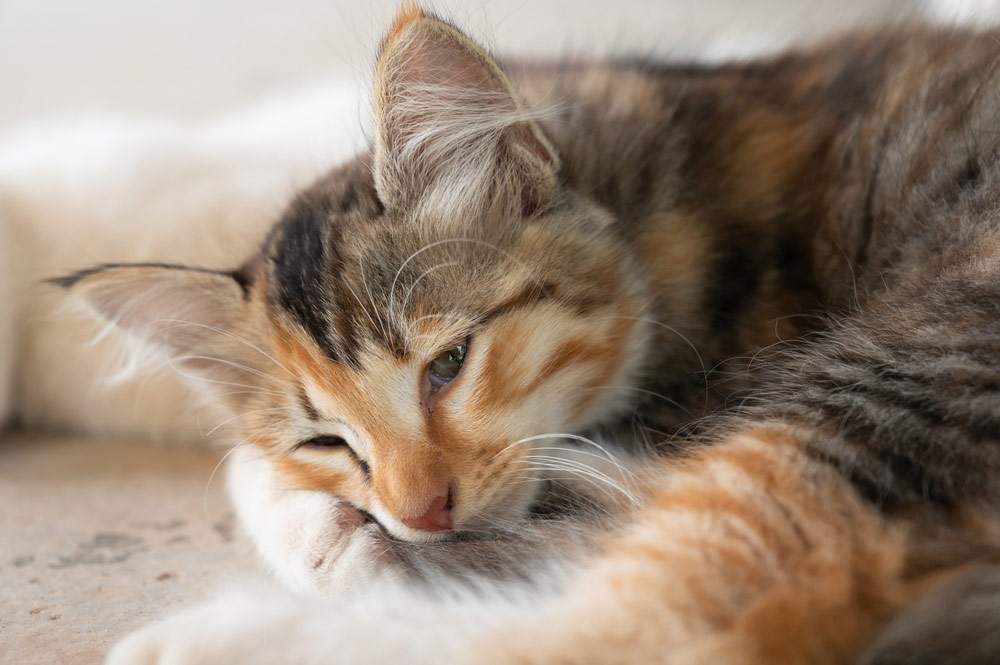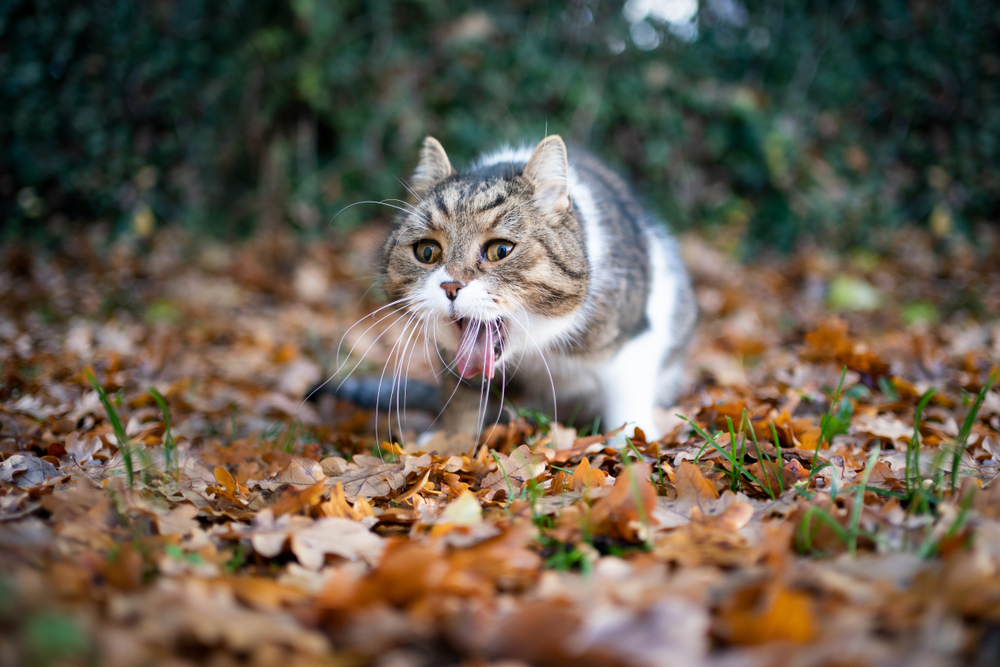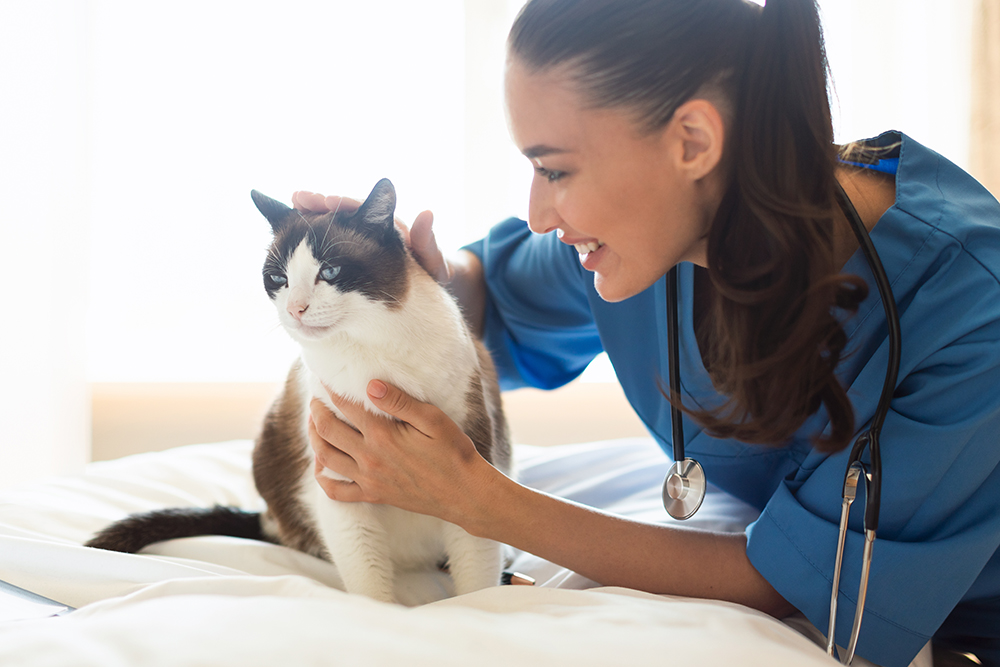Chlamydophila felis (formerly Chlamydia felis) is a bacterium that can infect cats of any age, although young kittens are most often impacted. Clinical signs vary; however, the most common sign is conjunctivitis. In fact, a study suggested that up to 30% of cats with conjunctivitis are infected with Chlamydophila felis.
Depending on the lifestyle of your cat, a chlamydia vaccination may be warranted. Continue reading below to learn more about this pathogen and how it can impact your cat!
What Is Chlamydia?
Chlamydophila felis is a bacterial infection that is most often spread through direct contact with eye secretions of infected cats. An infection with Chlamydophila felis can lead to a condition referred to as chlamydiosis or chlamydial conjunctivitis. Indirect contact with contaminated items or aerosol transmission is possible, although it’s not as common, as the bacteria doesn’t survive well in the environment.
Besides ocular secretions, Chlamydophila felis can be shed through the tissues of the rectum and vagina of infected cats. It Is unclear if the bacterial infection can spread through this route.
Once a cat has been exposed to Chlamydophila felis, the incubation period ranges from 3–10 days. Clinical signs of infection can last several weeks to months, with the most severe signs occurring within 1–2 weeks of the onset of clinical signs.
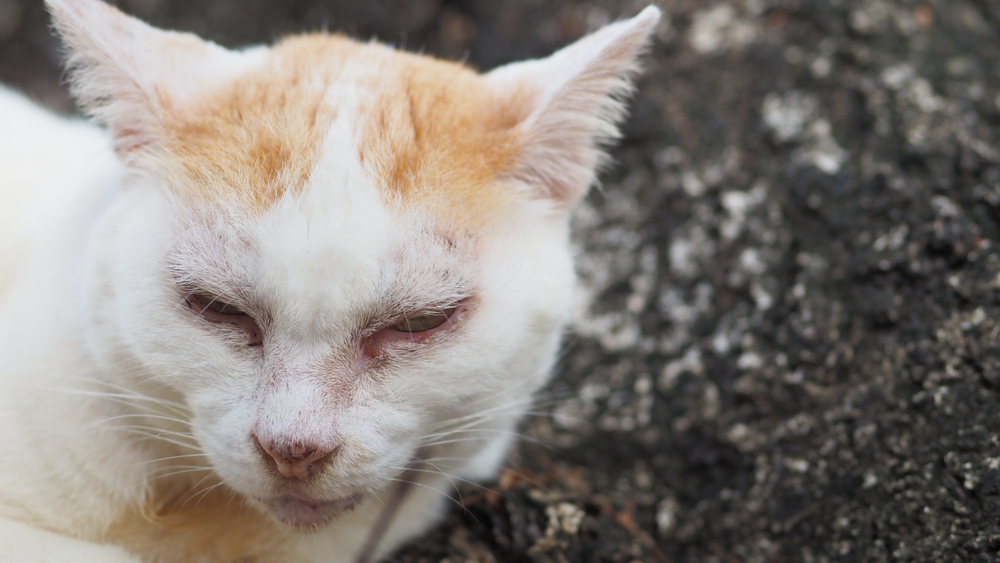
What Are the Signs of Chlamydia in Cats?
Some cats may experience upper respiratory signs, but the most common sign seen with a chlamydial infection in cats is conjunctivitis. The conjunctiva is the pink mucosa that lines the eyelids and is visible when the lower lid is pulled down. Typically, the conjunctiva is pink in color and appears smooth. Cats with conjunctivitis will have a noticeably darker coloration to this tissue, and swelling can be present, making the conjunctiva much more prominent.
Other signs of chlamydia in cats include:
- Bilateral conjunctivitis
- Sneezing
- Nasal discharge
- Lethargy
- Respiratory distress
Diagnosing Chlamydiosis in the Cat
The first step in diagnosing a cat with chlamydiosis is a physical examination. Cats with conjunctivitis, complete with redness and ocular drainage, are suggestive of chlamydiosis. Cytology and culture are possible ways an infection with Chlamydophila felis can be diagnosed; however, the preferred test is a PCR test.
PCR tests are able to identify pathogen DNA, making detection of bacteria possible before antibodies are formed. To run this test, the clinician must swab the pharyngeal area of the cat’s mouth and the conjunctiva. The swab is then sent to a reference laboratory where a PCR test is performed. The results are typically available within 1–4 days.
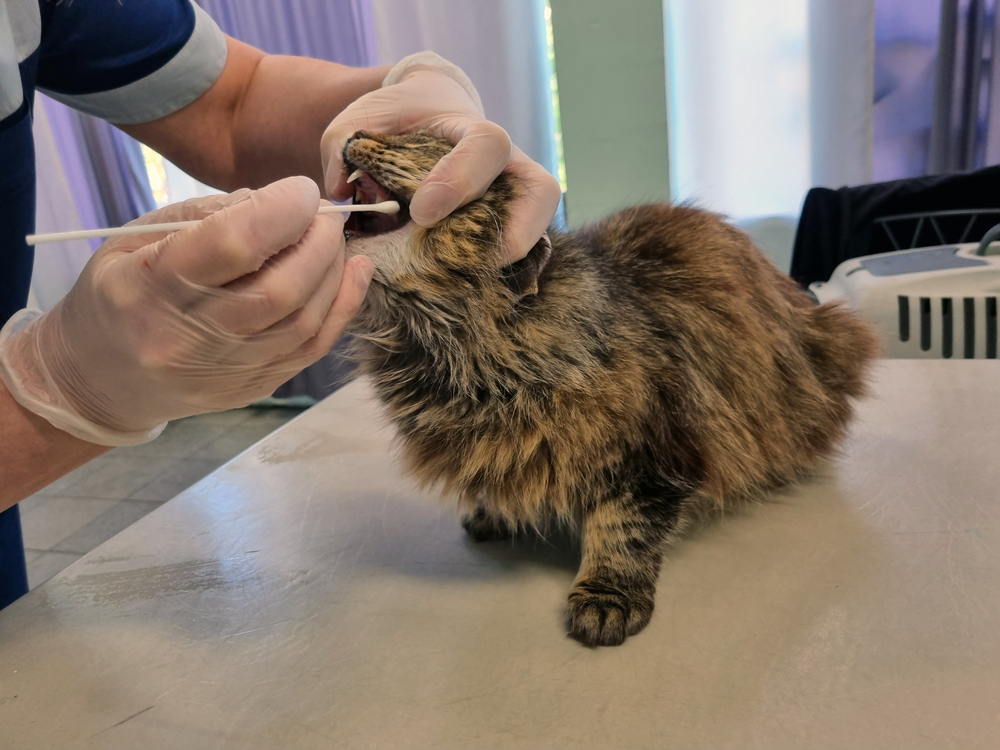
How to Treat Chlamydiosis in Cats
Antibiotics are recommended for cats with chlamydia. Treatment can be either systemic or topical; however, topical eye drops are rarely used alone. Doxycycline is often the antibiotic of choice, which is administered orally at 10 mg/kg once daily. When possible, the antibiotic formulation should be liquid to avoid esophageal strictures. Due to the lifecycle of the bacteria, extended use of antibiotics is recommended over a 4–8-week period.
If doxycycline is contraindicated in your cat, other antibiotics may be effective.
How to Care for a Cat With Chlamydia
In addition to administering medications as prescribed by your veterinarian, warm compresses to the eyes can be helpful. Compresses can help to reduce swelling and soften any discharge that has accumulated on the eye.
It is important to not introduce your cat to other cats while showing signs of infection. If possible, keep your cat isolated from other cats within your home while being treated for chlamydia. Treatment may be recommended for all cats within the household due to the high likelihood of transmission.
In multi-cat households, proper cleaning and husbandry are necessary to help prevent the spread of this bacteria.
Vaccination Against Chlamydia
Chlamydia vaccinations are available to cats but are not considered core vaccinations. Cats that should be considered for vaccination are those in shelter environments or catteries. The vaccination can be given to kittens as young as 9 weeks of age. Although the vaccination doesn’t completely prevent illness, the clinical signs are reduced and bacterial replication is diminished.
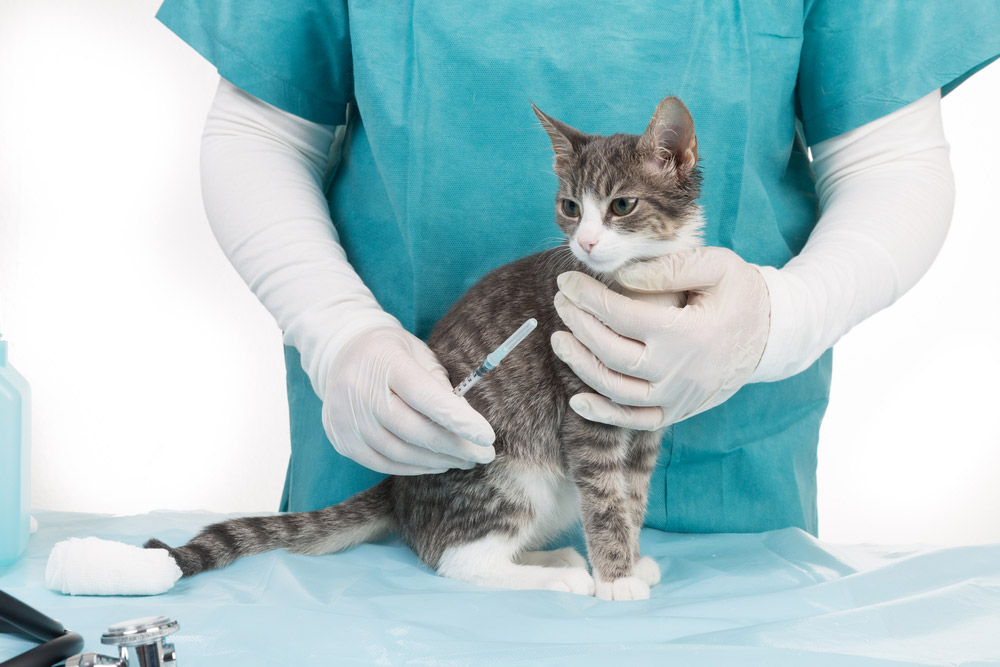
FAQ
My Kitten Has Been Diagnosed With Chlamydia. What Is Her Prognosis?
Overall, the prognosis of a cat being appropriately treated for chlamydia is good. Clinical signs quickly improve. It is important to continue medication, even if signs resolve to help prevent reoccurrence.
Am I at Risk of Developing Conjunctivitis From My Cat?
There are rare reports of people in households with infected cats developing runny eyes. If anyone in your household develops signs of infection, your human doctor should be contacted so treatment can be initiated. The prognosis is good.
Conclusion
Chlamydophila felis often causes conjunctivitis in affected cats. Systemic signs of infection are typically mild and not common. Affected cats should be appropriately treated with antibiotics for an extended duration of time to minimize chances of reoccurrence and spread.
In addition to oral antibiotics, warm compression of the eyes can improve infected cats’ comfort. Cats in catteries or in multi-cat households may benefit from vaccination. Overall, the prognosis for cats with chlamydia is favorable, and reported transmission to humans is very uncommon.
Featured Image Credit: Lebedko Inna, Shutterstock
Contents
- What Is Chlamydia?
- What Are the Signs of Chlamydia in Cats?
- Diagnosing Chlamydiosis in the Cat
- How to Treat Chlamydiosis in Cats
- How to Care for a Cat With Chlamydia
- Vaccination Against Chlamydia
- My Kitten Has Been Diagnosed With Chlamydia. What Is Her Prognosis?
- Am I at Risk of Developing Conjunctivitis From My Cat?

